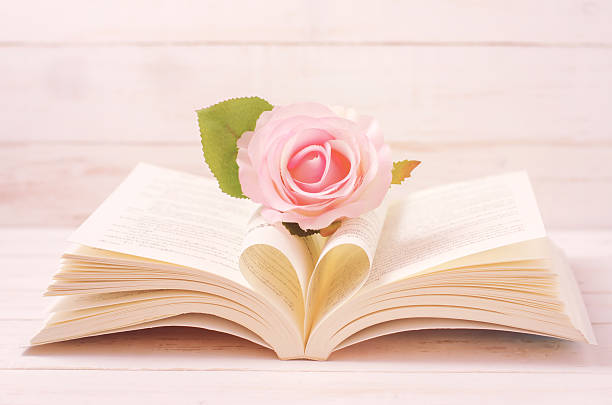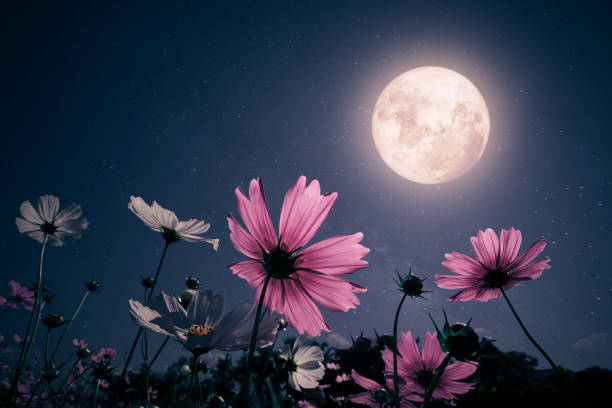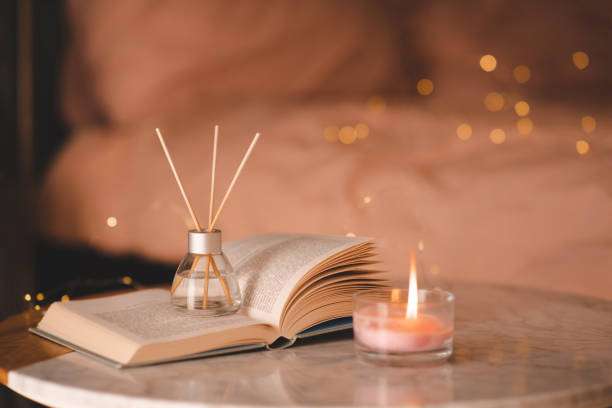How To Write A Gothic Romance Novel (10 Best Tips)
Embarking on the journey of writing a Gothic romance novel is akin to unlocking the secrets of a mysterious, moonlit garden where love and darkness entwine in a haunting embrace.
This genre, rooted in the atmospheric depths of Gothic literature, beckons authors to immerse themselves in the delicate dance between passion and the supernatural.
Crafting a Gothic romance novel is an artful balance of eerie landscapes, enigmatic characters, and a narrative that pulses with an ethereal heartbeat.
From the brooding heroes and heroines to the haunting settings that serve as silent witnesses, every element weaves together to create a tale that transcends the ordinary.
In this exploration, we delve into the art of building suspenseful plots, creating characters with hearts as intricate as the labyrinthine settings, and infusing language with an enchanting atmosphere.
Join the journey as we unravel the intricacies of writing a Gothic romance novel, inviting both seasoned authors and aspiring storytellers to unlock the gates to a realm where love and the supernatural coalesce in a symphony of bewitching beauty.
How To Write A Gothic Romance Novel
Writing a Gothic romance novel involves several steps to create an atmospheric and emotionally charged story. Here’s a step-by-step process:
Understand the Genre
Familiarize yourself with the key elements of Gothic romance, such as dark settings, mysterious characters, and elements of the supernatural. Read other Gothic novels to grasp the tone and style.
Develop Compelling Characters
Create complex and intriguing characters with hidden pasts, secrets, and conflicting emotions. Include a strong, independent heroine and a brooding, mysterious hero.
Choose a Haunting Setting
Set your novel in a mysterious, atmospheric location such as a crumbling castle, haunted mansion, or isolated estate. The setting should evoke a sense of foreboding and contribute to the overall atmosphere.
Establish a Romantic Plot
Develop a compelling love story that includes elements of passion, forbidden love, and intense emotions. Incorporate obstacles and conflicts to heighten the drama.
Introduce a Supernatural Element
Gothic romances often include supernatural or paranormal elements. Introduce ghosts, curses, or otherworldly occurrences to add an extra layer of mystery and intrigue.
Create a Sense of Atmosphere
Focus on creating a dark and atmospheric mood through vivid descriptions, sensory details, and carefully chosen language. Use weather, lighting, and surroundings to enhance the overall tone.
Build Tension and Suspense
Incorporate elements of suspense to keep readers engaged. Include unexpected twists, mysterious events, and unanswered questions to maintain a sense of tension throughout the story.
Include Gothic Motifs
Utilize common Gothic motifs such as hidden passages, secret doors, mirrors, and symbolism to enhance the mysterious and supernatural aspects of your novel.
Develop a Unique Writing Style
Cultivate a writing style that reflects the Gothic genre. Use rich and evocative language to create a sense of unease and fascination.
Craft a Memorable Ending
Provide a satisfying resolution to the romantic plot while still maintaining an air of mystery. Tie up loose ends and offer closure, but leave some elements open-ended to preserve the Gothic atmosphere.
Remember, these steps are general guidelines, and there is room for creativity and individuality within the Gothic romance genre. Use them as a foundation and allow your unique voice and storytelling style to shine through.

Understanding the Genre
Understanding the genre of Gothic romance is akin to stepping into a shadowed realm where passion intertwines with the supernatural, and the echoes of haunted castles resonate with the beating hearts of complex characters.
It’s not merely a literary niche; it’s an exploration of the human psyche in the throes of love, mystery, and the macabre.
This genre is a labyrinth of emotions, where the ordinary becomes extraordinary, and the mundane is draped in an enigmatic cloak.
Gothic romance demands that we delve into the depths of atmospheric landscapes and delve into the secrets of characters draped in shadows, challenging writers to blend elements of love and fear seamlessly.
To understand Gothic romance is to embark on a journey where every flicker of candlelight holds a secret, and every creaking floorboard resonates with the pulse of an undying, otherworldly love.
Exploration of Gothic elements
Embarking on the exploration of Gothic elements is akin to navigating a darkened labyrinth of literary enchantment. It is a journey into the recesses of the human psyche, where atmospheric landscapes become characters in themselves, haunted by the echoes of centuries past.
Within this genre, the imposing edifices of haunted castles and mansions cast elongated shadows that dance with the ethereal whispers of the supernatural.
Characters, draped in enigmatic shrouds, walk a fine line between light and shadow, embodying the brooding heroes and heroines that define Gothic romance.
Themes of love and passion intertwine seamlessly with the macabre, creating a tapestry of emotions that range from the tender caress of affection to the chilling embrace of fear.
As one delves deeper, the exploration of Gothic elements unveils a world where the ordinary is transformed into the extraordinary, and every narrative twist unravels a layer of mystery, beckoning readers into a realm where the boundaries between reality and fantasy blur with delicious ambiguity.
Developing Compelling Characters
In the alchemy of storytelling, developing compelling characters is the art of breathing life into the ink and paper. It’s about forging protagonists with hearts that beat in harmony with the pulse of the narrative, each throb echoing their complex symphony of strengths and vulnerabilities.
Akin to sculpting from the raw material of imagination, the characters should not merely occupy the pages; they should inhabit the reader’s thoughts long after the book is closed.
The protagonist, a dance of contradictions, balances on the tightrope between courage and fragility, creating an irresistible magnetism that draws readers into their world.
The antagonist, draped in the shadows of enigma, becomes the dark mirror reflecting the protagonist’s deepest fears. And in the supporting cast, each character is a brushstroke, contributing to the vivid palette that paints the emotional landscape of the tale.
Developing compelling characters is not a mere task; it’s an incantation, inviting readers to plunge into the depths of humanity’s most profound complexities.
Protagonist
In the symphony of a Gothic romance novel, the protagonist emerges as a captivating melody, weaving through the haunting notes of love, mystery, and self-discovery.
This central character is not a mere conduit for the narrative but a living, breathing entity with a soul as intricate as the labyrinthine plot they navigate.
Akin to an alchemist crafting gold from base elements, the author meticulously sculpts a protagonist who embodies the delicate dance between strength and vulnerability.
Complex, conflicted, and compelling, the protagonist is the beating heart of the tale, their journey a reflection of the broader human experience.
As they traverse the haunted landscapes and confront the shadows of their past, readers are invited to join in the protagonist’s metamorphosis, forging a profound connection that transcends the boundaries of fiction and reality.
Antagonist
In the Gothic romance tapestry, the antagonist emerges as a shadowy figure, a sinister orchestrator of discord whose presence casts a perpetual gloom upon the narrative canvas.
Crafted with meticulous artistry, the antagonist is not a mere foil to the protagonist but a creature of dark complexity, wrapped in layers of mystery and fueled by haunting motivations.
Their persona is a dance of malevolence and charisma, as the author weaves a cloak of enigma around their past and intentions.
The antagonist’s formidable presence becomes a crucible for conflict, driving the narrative to crescendos of tension and intrigue.
As the story unfolds, the reader is drawn into a delicate waltz with this shadowy figure, questioning loyalties and unraveling the threads of their own understanding.
The true artistry lies in transforming the antagonist from a two-dimensional villain into a multi-faceted force, challenging both the protagonist and the reader to confront the shades of gray within the Gothic narrative.
Supporting characters
In the intricate mosaic of a Gothic romance novel, supporting characters emerge as vibrant hues that enhance the overall narrative palette. Far from being mere adornments, these characters are the backbone of the story, contributing unique flavors to the emotional symphony.
Each supporting character, meticulously crafted, becomes a living entity with their own aspirations, fears, and quirks.
Whether it’s the loyal confidante, the eccentric mentor, or the enigmatic guide, their roles extend beyond the periphery, influencing the trajectory of the plot and enriching the reader’s experience.
Like threads intricately woven into the fabric of the tale, these characters amplify the atmospheric resonance, providing depth and nuance to the overarching story.
As they intersect with the protagonist and antagonist, their interactions add layers of complexity, mirroring the intricacies of real-life relationships.
In the realm of Gothic romance, supporting characters aren’t merely side players; they are indispensable contributors to the immersive journey, each with a distinct melody that resonates long after the final chapter has unfolded.
Crafting a Haunting Setting
Crafting a haunting setting in a Gothic romance novel is akin to being a master architect of dreams and nightmares.
It’s about breathing life into the bricks of ancient castles, letting the ivy of mystery crawl across every weathered stone, and orchestrating the symphony of shadows that dance through dimly lit corridors. The setting isn’t just a backdrop; it’s a character, an entity with its own pulse that beats in harmony with the characters’ hearts.
Whether it’s the moonlight casting an ethereal glow over mist-shrouded moors or the howling winds whispering secrets through towering turrets, the atmosphere is the silent conductor of the narrative.
Every creaking floorboard and rustling curtain becomes a deliberate note in the composition, creating an immersive experience where readers can almost feel the chilly tendrils of the supernatural brushing against their skin.
Crafting a haunting setting isn’t just about describing a place; it’s about inviting readers into a realm where the architecture of the unknown becomes as tangible as the worn pages they turn.

Choosing the right location
Choosing the right location in a Gothic romance novel is akin to selecting the perfect stage for a spellbinding play.
It’s not merely about landscapes; it’s about orchestrating a backdrop that resonates with an aura of haunting allure. Whether perched on a craggy cliff overlooking a tempestuous sea or nestled in the heart of a dense, foreboding forest, the location becomes an atmospheric character in itself.
The setting should be more than a passive canvas; it should pulse with history, bearing the weight of forgotten whispers and concealed secrets.
Each chosen locale, from the grandeur of decaying manors to the solitude of desolate chapels, should evoke an emotional response, setting the stage for the dance between love and the supernatural.
In the labyrinth of Gothic romance, the right location isn’t just a place; it’s a sentient force, an integral player that amplifies the tension, heightens the mystery, and ensnares readers in a web of atmospheric enchantment.
Descriptive writing techniques
Descriptive writing in a Gothic romance novel is the alchemy of words, a meticulous craft that transcends the mere transmission of visual information to become a conduit for atmosphere and emotion. It involves more than just detailing the physical attributes of a scene; it’s about infusing every word with a subtle yet palpable essence that immerses readers in a sensory experience.
The techniques employed range from vivid imagery that paints the surroundings with haunting brushstrokes to meticulous attention to sensory details, allowing readers to feel the chill of the mist, hear the echo of footsteps in a cavernous hallway, and smell the intoxicating fragrance of ancient books.
By embracing the power of symbolism and metaphor, descriptive writing in Gothic romance becomes a tapestry, weaving together the tangible and the intangible, the seen and the unseen.
It invites readers to not just observe the setting but to feel its pulse, making every description a portal into a world where the boundaries between reality and the supernatural blur in a symphony of haunting beauty.
Plotting the Romance
Plotting the romance in a Gothic tale is akin to orchestrating a dance of passion and peril on the precipice of the unknown. It’s about intertwining the delicate threads of love with the dark shadows of mystery, creating a narrative cadence that keeps readers both enthralled and on the edge of anticipation.
The plot is a labyrinth of twists and turns, where forbidden love clashes with societal barriers and the supernatural lurks in the corners, waiting to entwine itself with the characters’ destinies.
Each plotted beat is not just a progression in the storyline; it’s a heartbeat, resonating with the emotional crescendos of desire and danger.
The romance isn’t a mere subplot; it’s the pulsating core, propelling the characters through a narrative symphony that echoes with the resonance of love’s triumph over adversity, all while shrouded in the enigmatic mists of the Gothic atmosphere.
Establishing the central love story
Establishing the central love story in a Gothic romance novel is akin to setting the foundations of an ancient castle—each layer imbued with history, passion, and an air of timeless mystery.
The love story is not merely a tale of hearts entwined; it’s the heartbeat that echoes through the narrative corridors. From the moment the protagonists meet beneath the gloaming moon to the crescendo of their passions in the face of adversity, every encounter is a carefully crafted note in a symphony of desire and danger.
The central love story is a dance between light and shadow, where the chemistry between characters is as palpable as the flickering candlelight in a forgotten chamber.
Whether it’s the forbidden allure of a clandestine affair or the slow burn of a connection that defies societal norms, establishing the central love story in a Gothic romance is about creating an emotional resonance that lingers, casting a haunting spell on the reader’s heart.
Integrating supernatural elements
Integrating supernatural elements into the tapestry of a Gothic romance novel is akin to infusing the narrative with the ethereal fragrance of otherworldly enchantment.
It is a delicate dance between the palpable and the mysterious, where ghosts linger in the corners of moonlit chambers, and ancient curses cast long shadows over the protagonists’ destinies.
The supernatural is not a mere embellishment; it’s a living, breathing character in its own right, interwoven with the fabric of the love story.
Whether it be vengeful spirits haunting ancestral estates or enigmatic spells that bind fates together, these elements elevate the narrative beyond the boundaries of the ordinary.
The integration of the supernatural is an artful blend, where the uncanny becomes a silent partner in the dance of passion and danger, leaving readers spellbound by the mystique that hovers between the mortal and the magical.

Creating Atmosphere through Language
Creating atmosphere through language in a Gothic romance novel is akin to wielding a pen as a sorcerer’s wand, conjuring a literary spell that envelopes readers in an intoxicating mist of emotions and imagery.
It’s more than just words on a page; it’s a symphony of sentences that echo with the haunting melodies of love and the macabre.
The prose becomes a brush, painting the setting with strokes of atmospheric brilliance, from the moonlit glimmer on ancient cobblestones to the velvety shroud of shadows enveloping mysterious figures.
The language dances between the poetic and the eerie, utilizing vivid imagery and symbolic motifs to immerse readers in a sensory experience that transcends the written word.
With each carefully chosen phrase, the atmosphere becomes a palpable entity, a living, breathing presence that seduces and unsettles in equal measure.
In the realm of Gothic romance, crafting atmosphere through language is an enchantment, inviting readers to lose themselves in a world where every sentence is a portal to a realm where love and darkness entwine in a mesmerizing dance.
Resolving the Conflict
Resolving the conflict in a Gothic romance novel is akin to untangling the delicate threads of a love story that has been intricately woven with the shadows of mystery.
It’s not just about tying loose ends; it’s the orchestration of a grand finale where the crescendo of passion collides with the echoes of the supernatural.
As the characters confront their deepest fears and untangle the knots of their destinies, the resolution is a kaleidoscope of emotions that range from heart-wrenching revelations to triumphant embraces.
The conflict resolution is a tapestry of closure and ambiguity, where the ghosts of the past are laid to rest, and the characters emerge transformed by the crucible of their journey.
In this climactic unraveling, the reader is both spectator and participant, drawn into a resolution that lingers in the air like the haunting refrain of a love that defies both time and adversity.
Building towards a climactic resolution
Building towards a climactic resolution in a Gothic romance novel is akin to constructing an intricate cathedral of emotions and revelations, each narrative brick placed with deliberate precision.
The tension ascends like the echoing footsteps in a long-forgotten corridor, where secrets lie dormant, waiting to be unveiled.
As the plot unfolds, the stakes rise like the swirling mists that cloak ancient ruins, shrouding the characters in an air of palpable anticipation.
Every chapter becomes a steppingstone towards the crescendo, a careful layering of plot twists and character revelations that propel the story towards its zenith.
The climax is not merely a destination; it’s an immersive experience, where the symphony of love, betrayal, and the supernatural reaches a fever pitch.
In this climactic dance, the reader becomes entwined with the characters, hanging on the precipice of resolution, where the threads of the narrative converge into a breathtaking tapestry of closure and catharsis.
Frequently Asked Questions (FAQ) about How To Write A Gothic Romance Novel
What sets Gothic romance apart from other genres, and what key elements should I incorporate into my novel?
Gothic romance distinguishes itself with its atmospheric blend of love and the supernatural. Essential elements include haunting settings, mysterious characters, and a delicate balance between passion and the eerie.
How do I create a compelling protagonist for my Gothic romance novel?
Crafting a compelling protagonist involves blending strength with vulnerability, making them resonate with readers. Dive deep into their psyche, infusing complexities that mirror the genre’s atmospheric richness.
What role do supporting characters play, and how can I make them memorable?
Supporting characters are the vibrant hues that enrich your narrative palette. Give them unique personalities, quirks, and intertwine their stories seamlessly with the central plot for a more immersive experience.
How can I effectively build a haunting setting for my Gothic romance novel?
Choose locations that breathe with history and evoke a sense of foreboding. Use descriptive language to create an atmosphere where the setting becomes a living, breathing character in your story.
Is it necessary to include supernatural elements, and how can I integrate them seamlessly?
While not mandatory, supernatural elements add depth. Integrate them by weaving ghostly apparitions, curses, or otherworldly phenomena into the narrative, ensuring they enhance rather than overpower the romance.
What’s the key to resolving conflicts in a Gothic romance novel?
The resolution should be a culmination of emotional and supernatural arcs. Untangle the knots gradually, leading to a climactic finale where love triumphs over adversity, but with a lingering sense of mystery.
How do I create an atmospheric language that captivates readers in a Gothic romance novel?
Craft prose that blends vivid imagery, symbolism, and metaphor. Make language an artful brush, painting scenes that immerse readers in the haunting beauty and eerie enchantment of your world.
What publishing considerations should I keep in mind for a Gothic romance novel?
Research agents and publishers familiar with the genre, ensuring your query letter and synopsis effectively convey the atmospheric allure of your novel. Stay attuned to market trends while staying true to the essence of Gothic romance.
Conclusion
In conclusion, the art of writing a Gothic romance novel is an exploration of the sublime, a journey into the realms where love intertwines with shadows, and passion dances with the supernatural.
By meticulously crafting characters with layered emotions, constructing haunting settings that breathe with history, and seamlessly integrating elements of the eerie, authors can captivate readers in a symphony of dark beauty.
As we navigate the labyrinth of Gothic romance, from the climax of suspense to the resolution of lingering mysteries, it becomes evident that the genre is not just a literary choice but a commitment to an atmospheric enchantment that transcends the ordinary.
Aspiring writers are encouraged to embrace the challenges, experiment with language, and let their imaginations unfurl within the tapestry of Gothic romance, inviting readers into a world where love’s embrace is as eternal as the shadows that envelop it.






